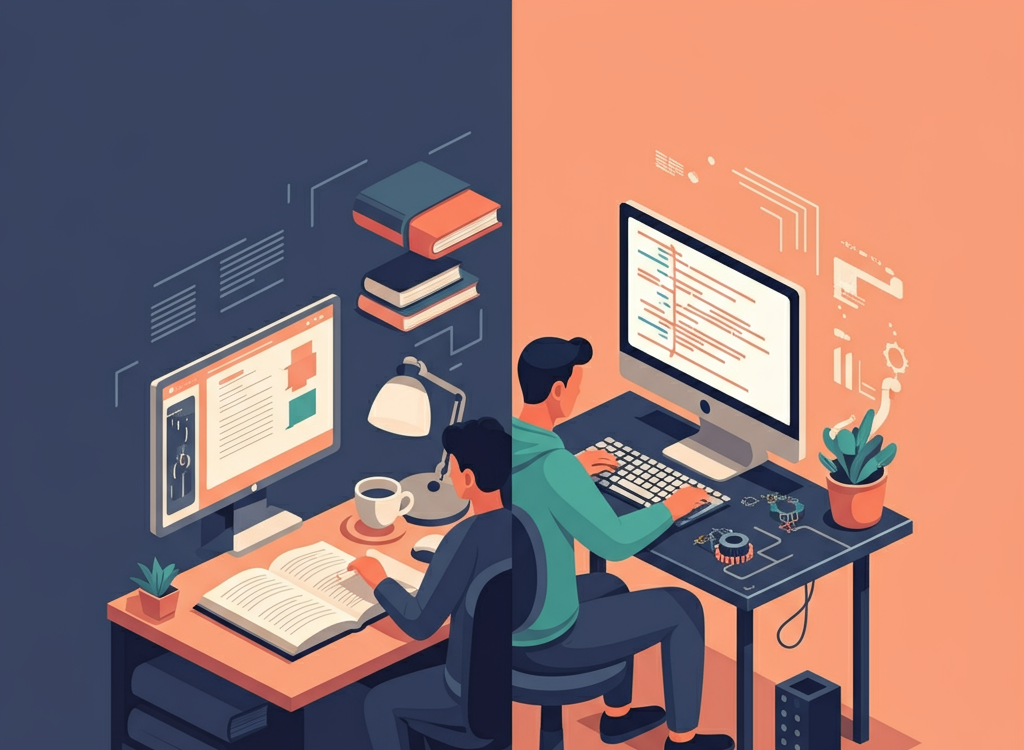Traditional education has long separated learning from doing. But in today’s fast-paced world, where skills matter just as much as degrees, a new approach is capturing global attention:
duaction. This dynamic model bridges knowledge and action, ensuring that what you learn becomes what you
do—right away. More than just a trendy term, duaction stands at the crossroads of modern educational theory and real-world success stories.
In this in-depth guide, you’ll discover what duaction is, the evidence supporting it, why it matters more than ever, and how you can use it to accelerate your own development—whether you’re a student, professional, educator, or lifelong learner. We’ll also draw on expert insights and up-to-date educational research to help you build genuine expertise and trust in this practical, forward-thinking concept.
What Exactly Is Duaction?
At its core,
duaction fuses two powerful forces:
dual (meaning “two at once”) and
action. It’s about learning and applying—simultaneously. Instead of endless lectures followed by delayed, often disconnected projects, duaction encourages you to take knowledge on board and immediately put it into practice. This model isn’t theoretical; it’s lived experience, echoing the work of education pioneers like John Dewey (who championed experiential learning) and modern corporate trainers like Josh Bersin, who advocate for skills-based, on-the-job learning.
- Engaged, Active Participation: Learning happens through doing, not just listening or reading.
- Instant Feedback: Mistakes and wins occur in real time, allowing for organic, deep learning.
- Well-Rounded Growth: Mental engagement meets hands-on skills, so knowledge truly “sticks.”
Duaction harmonizes with the latest research in cognitive science, which shows that real learning often relies on immediate application. When you practice right after learning, you remember more—and you build the confidence needed to adapt and grow in new situations (APA, 2016).
Why Relying on Traditional Learning Isn’t Enough
For generations, education revolved around “memorize and repeat.” Whether through textbooks or endless PowerPoints, this method led to information being learned in theory—but quickly forgotten in practice. There’s a growing body of evidence that without action, even bright minds can struggle to use what they’ve learned outside the classroom.
- A programming student truly grasps code only when they use it to build something meaningful.
- Marketers learn faster when creating campaigns alongside reading strategies—not just after passing exams.
Duaction closes the gap: your learning is continually tested, proved, and improved in context. This is precisely why many top educators now design “flipped classrooms” and competency-based programs—methods deeply aligned with the duaction mindset.
Why Duaction Works: Key Benefits Backed by Real-World Results
When you combine learning with doing, the results speak for themselves. Here’s what makes duaction indispensable for anyone committed to mastering new skills or concepts:
- Exceptional Knowledge Retention: According to recent studies, people retain up to 75% of content learned when they put it into immediate action—far higher than through passive review alone.
- Skill Readiness: Employers increasingly desire “job-ready” talent. Duaction means you’re not only learning but building and demonstrating practical skills as you go. For example:
- Engineering students work on real-world prototypes throughout their degree.
- Nursing trainees perform hands-on diagnostics within weeks of starting their studies.
- Increased Engagement and Motivation: Learning becomes a challenge to be solved, not just a memory test. Gamified learning, peer collaboration, and timely feedback spark lasting motivation—a key ingredient for real progress.
- Foundation for Lifelong Learning: By integrating skills and theory, duaction turns learning into a habit, not a chore. Professionals and creatives alike report that this “learn-apply-reflect” cycle keeps them adapting in our ever-changing world.
- Tighter Education-to-Work Connection: The classic “degree-to-job” pipeline often creates a mismatch between what’s taught and what’s needed. Duaction confronts this, so you’re prepared to excel from day one, no matter your career.
Personal tip from experience: Whenever you pick up a new skill, give yourself a “mini-project” right away—even if it’s casual or imperfect. That small step transforms theory into reality, fast.
Taking Action: How to Start Using Duaction
Curious how to put duaction to work for you? The process can fit nearly any goal, big or small, and doesn’t require expensive tools or fancy credentials. Here’s a road map you can follow, inspired by best practices from seasoned educators and industry insiders:
- Clarify Your Objectives: Vague ambitions die quickly. Pin down a specific target, then break it down:
- Want to master Spanish? Combine online lessons with real conversation at weekly language meetups.
- Learning data visualization? Pair video tutorials with projects using actual public datasets.
- Embrace EdTech—But Don’t Rely on It Alone: Platforms like Duolingo, Coursera, and Khan Academy give you the structure and interactivity needed for duaction. But remember: it’s the application outside the screen that proves what you’ve learned.
- Join and Build Learning Communities: Skilled teachers and peers bring unique perspective, accountability, and real-world context. Coding bootcamps, study groups, and online forums can supercharge your progress.
- Work the “Learn-Do-Reflect” Cycle:
- Learn: Take in new concepts, in small, digestible doses.
- Do: Apply them—immediately—in a hands-on task (however small).
- Reflect: Ask, “What worked? What’s still fuzzy?” Adjust your next steps with honest feedback.
Insider suggestion: Keep a written or digital “duaction diary.” Use it to track experiments, setbacks, and “aha!” moments. This habit not only reinforces learning but gives evidence of your growth to future employers or collaborators.
Adapting Duaction: Education, Business, and Beyond
1. Duaction in Schools & Universities
Forward-thinking educators worldwide have begun infusing duaction into classrooms. This can mean interactive labs, collaborative group projects, and peer feedback. For example, STEM programs often challenge students to create prototypes
while studying theory, ensuring lessons are tangible and memorable. Case in point: the flipped classroom model now used at Harvard and MIT, where students master fundamentals independently, then tackle hands-on problems during class (MIT News, 2018).
- Math comes alive through math-based games and real-world storytelling.
- History is explored via debates and historical reenactments—instead of just relying on textbooks.
2. Duaction at Work: Corporate and Professional Training
Corporate learning leaders have seen how duaction transforms employee engagement and outcomes. When teams are asked to implement new knowledge—like sales strategies or coding principles—right after learning them, performance improves dramatically. In practice, companies like Google and Deloitte now structure their employee training programs to prioritize project-based, on-the-job tasks along with traditional learning modules.
- Sales teams role-play live pitches after strategy workshops.
- Software engineers participate in real-time hackathons and pair programming sprints.
3. Duaction for Personal Growth
Duaction isn’t limited to academic or corporate settings. If you want to learn painting, for example, read about techniques—but then put brush to canvas. If you’re building better nutrition habits, don’t just research; plan and cook new recipes. This “act as you learn” mantra keeps improvement steady and setbacks educational, not discouraging.
Helpful tip: Pair research with a habit tracker or set weekly mini-challenges that push you toward your end goal.
Overcoming Common Duaction Roadblocks
No method is perfect—and duaction is no exception. But recognizing likely pitfalls makes it easier to avoid them:
- Time Constraints: Break learning tasks into small, manageable pieces (try 25-minute Pomodoro intervals).
- Lack of Resources: Use free or low-cost online tools; libraries and community centers often offer equipment or classes, too.
- Fear of Failing: Remember, mistakes bring deeper understanding. Every “flop” is just another learning milestone.
Real talk: I’ve often learned more from projects that didn’t work the first time than from those that came easy. Stay curious, and give yourself permission to learn as you go.
Duaction and the Future: Where Learning Is Headed
Duaction isn’t a fad. It’s rapidly becoming the backbone of forward-thinking schools, universities, and companies. With the rise of hybrid educational models, AI-driven learning assistants, and global communities of practice, the opportunities for learning
and acting have never been greater.
- Blended and Hybrid Learning: Students mix online and in-person modules, imprinting theory through hands-on workshops.
- Dynamic Technology: Education technology (EdTech), from VR simulations to AI tutors, brings duaction to more people—no matter their background or physical location.
- Skills Over Credentials: Companies now favor those who can do, not just those who know about. Having verifiable projects and skills opens more doors than ever.
If you want to stay ahead—no matter your stage in life—embrace duaction as your personal growth engine.
Conclusion: Make Duaction Your Edge
In a world where knowledge alone is no longer enough, duaction unlocks a practical superpower: the ability to turn every lesson into forward momentum. Whether you’re leveling up at work, launching a side hustle, or exploring a new hobby, bringing theory and action together—consistently—is the surest path to mastery.
Ready to try duaction? Choose one area—any area—where you want to improve. As soon as you finish your next lesson, take just one step to apply it in a real, tangible way. Document your experience, learn from the results, and adjust. You’ll find the process not just more effective, but far more rewarding.
Have you tried duaction in your studies or career? Share your story or tips in the comments—we’d love to hear from you and learn together!




